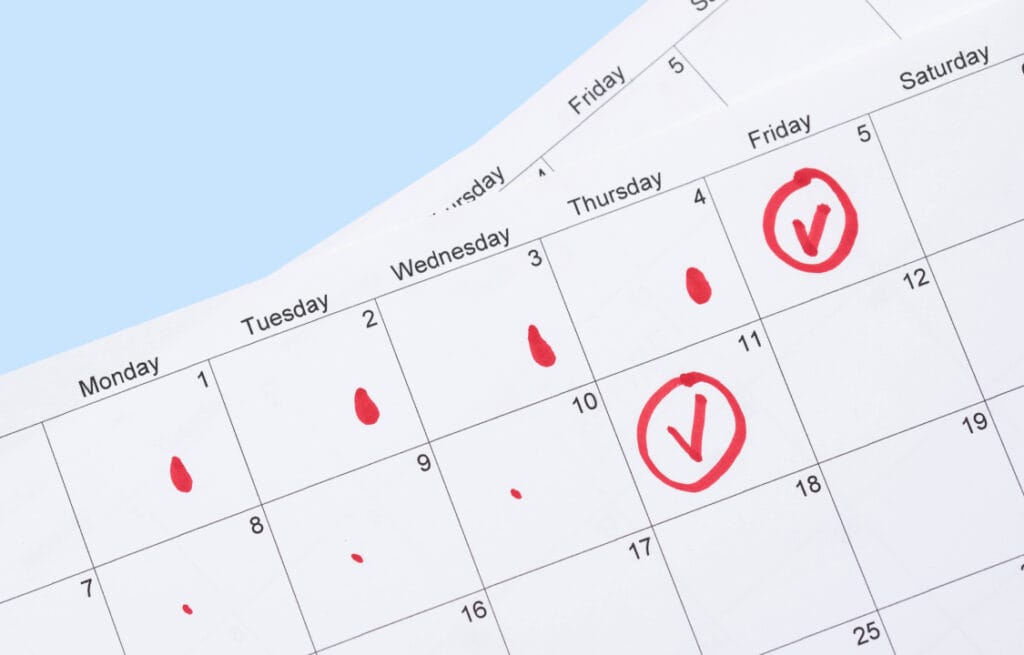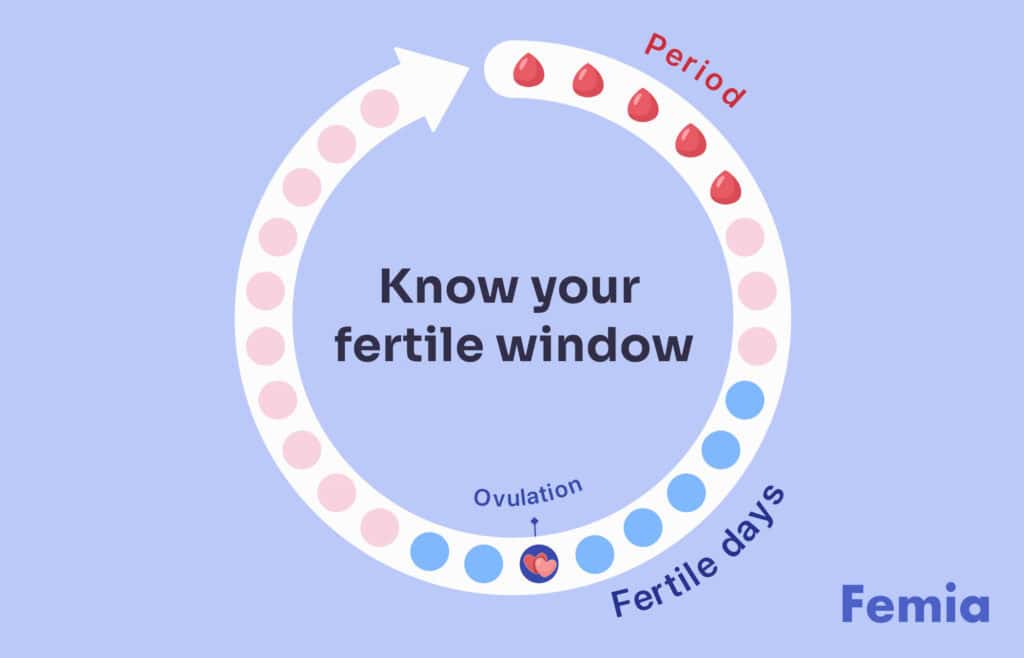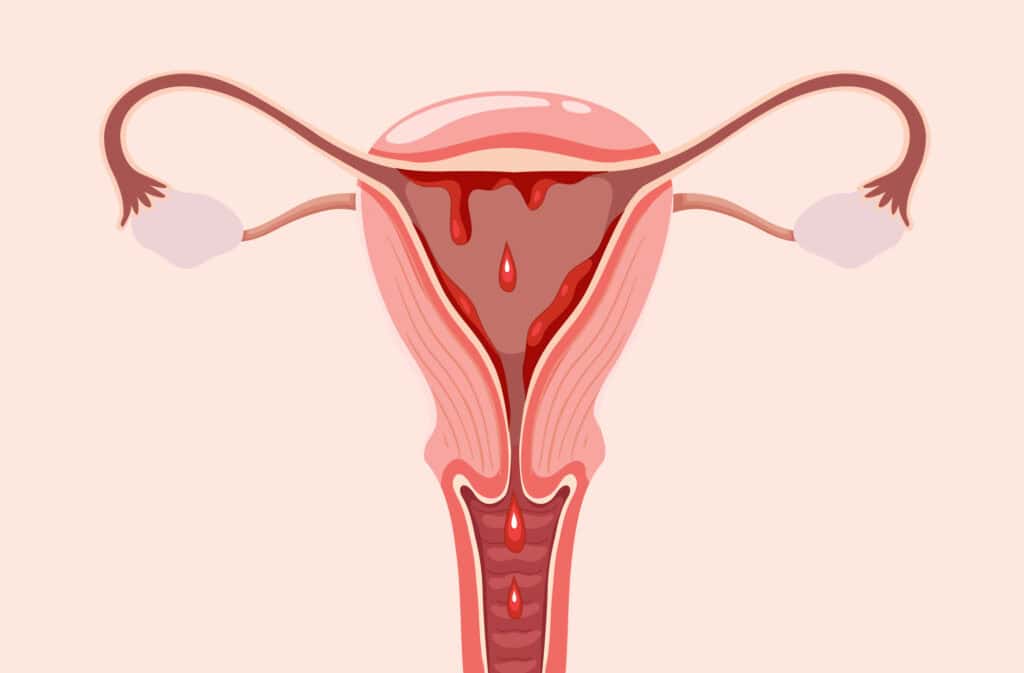Femia > Health Library > Getting Pregnant > Planning pregnancy > How to recognize signs of high fertility in a woman: A detailed guide
How to recognize signs of high fertility in a woman: A detailed guide

- Updated Feb 10, 2025
- Published
CRAFTED BY HUMAN
Crafted by human At Femia, we provide accurate and up-to-date information at every stage of your journey, from trying to conceive, pregnancy and postnatal support. All content is created by a real person based on in-depth research and own professional experience. Femia ensures that you will receive expert advice, strict accuracy and a personalized approach from our authors/medical experts. Learn more about our editorial policy.
FACT CHECKED
Fact checked At Femia Health, we maintain the highest standards of editorial excellence in delivering content focused on helping you conceive, guiding you through pregnancy, and supporting you postpartum. Explore our content review principles to learn how we ensure the accuracy and quality of our health and lifestyle tips for every stage of your journey.
A woman’s fertility levels rise and fall during a monthly cycle, and you likely experience physical changes along with this fluctuation. Understanding the mechanisms and factors that determine female fertility, as well as how to track these changes, may be just the knowledge you need to start your pregnancy journey.
By being aware of physical changes, tracking your period, and taking ovulation tests, you can increase your chances of predicting your fertile window and successfully conceiving.
If you decide to have a baby, questions and concerns about fertility may come to mind that you never thought of before. At the start of your journey to motherhood, it is normal to wonder: what does “fertility” mean?
Simply put, fertility is the natural ability to conceive and bear children. In women, it revolves around having regular menstrual cycles, healthy levels of sex hormones, and healthy reproductive organs. All of these factors play a role in the complex process of reproduction.
Femia helped 35,000 couples to optimize their fertility.
Unlike men, women are not equally fertile at all times of the menstrual month. Changes in your menstrual cycle make it more or less likely to conceive. Understanding the signs of a high fertility period can ease your quest for pregnancy and increase your chances of success.
Understanding fertility
Conception is a complex process that requires both the man and woman to be fertile. A viable pregnancy can only be created when both reproductive systems are functioning properly.
In women, fertility is determined by regular menstrual cycles, during which an egg is released from the ovaries (ovulation). A healthy reproductive tract, including the fallopian tubes (tubes that connect the ovaries to the uterus), the uterus, and its cervix, is essential for the sperm to meet the egg and fertilize it. Of course, healthy levels of hormones like estrogen and progesterone are needed to regulate the menstrual cycle and support pregnancy.
👉Find out more: How long should you be off birth control before trying for a baby
The female reproductive system undergoes changes throughout the menstrual cycle. Certain times of the month are associated with low, medium, high, and peak fertility. As you may guess, the high and peak fertility days come with the highest chance of getting pregnant.
@femia.fertility PART 2: HOW TO CATCH YOUR OVULATION 🌟 Our fertility expert Dr. Hector Chapa is here to help you pinpont your most fertile days. Don't miss Part 3, where we will discuss the BBT which is a popular ovulation tracking method! #ovulation #highfertility #fertilewindow #fertilityawareness #fertilitydoctor #ovulationtracking #opk #bbt #educational #ttc ♬ original sound - Femia fertility tracker
High fertility vs peak fertility
What is the difference between high fertility and peak fertility? High fertility encompasses a few days (up to five) prior to ovulation, which usually happens in the middle of your menstrual cycle. Having sex during this period can likely lead to pregnancy, because the sperm can survive for several days until an egg is released. On the other hand, peak fertility happens closer to the actual time of the ovulation—the day before and the exact day—when the egg is viable and waiting to be fertilized by the sperm.

Physical signs of high fertility
How to tell that your body is going through days of high fertility, also known as the fertility window? Simply look out for these physical signs:
Regular menstrual cycles
Are your periods regular and on-time? Although this may not be the most relevant sign, having periods that arrive on time could indicate good fertility. The reason behind this is that both hormone levels and reproductive system health contribute to timely ovulation and menstruation. At the same time, hormonal problems and medical conditions such as PCOS and endometriosis can make your menstrual bleeding irregular and incredibly painful.
👉Find out more: Can you get pregnant when you’re not ovulating
Changes in cervical mucus appearance
You might have noticed that your vaginal discharge, also known as cervical mucus, changes color around the time of ovulation. It may become clear, slippery, thin, and stretchy around the time of your peak fertility. The secretion might even resemble a raw egg white.
This is a good sign. The new consistency of the mucus helps sperm move towards the egg more easily. It also lets you know that your fertility is high or peaking at the moment. Time for action!
Changes in basal body temperature
The basal body temperature is the lowest temperature of your body while resting and should be measured first thing in the morning, before burning any energy with physical activity. Due to hormonal changes in your body, the time of ovulation is associated with a small but detectable rise in basal body temperature. This elevation is a physical sign that might signal ovulation and peak fertility.
Of course, increased basal body temperature is not something that you would notice without close monitoring. There are many other reasons for your temperature to go up, so interpret this physical sign in conjunction with the other changes your body is going through.
Mittelschmerz (ovulation pain)
Many women experience pain around the time of their period, but have you ever felt lower-belly pain two weeks after menstrual bleeding, when you are supposed to be ovulating? If yes, there is no reason to worry. Ovulation pain is experienced by many women, and it is so common that it has earned itself a name: Mittelschmerz.
Why is ovulation sometimes painful? There are a couple of possible reasons. As the egg is released from the follicles in your ovaries, it actually pops out. The popping-out might sometimes hurt.
Also, ovulation happens as the levels of luteinizing hormone (LH) increase. The side-effect of this hormonal change can be the sudden contraction of smooth muscles in the ovary area. Ouch.
Mittelschmerz can be experienced as a mild or strong pain. Ladies usually feel it on one side of the lower belly, close to the ovary. So, if you feel pain there, your fertility could be skyrocketing.
Behavioral and lifestyle indicators of fertility
Some behaviors and lifestyle habits can support fertility. So, if you are trying to conceive, these tips might be able to help.
- Having a balanced diet. A fertility diet full of diverse and nourishing meals can improve your overall health and increase your chances of getting pregnant.
- Taking supplements. Supplementing your diet with recommended doses of folic acid, iodine, zinc, and selenium can help you get pregnant and have a healthy baby. Before introducing supplements to your diet, however, make sure to talk with a trusted healthcare provider.
- Working out regularly. Physical activity is an essential part of good health and disease prevention. Ladies who are planning to or trying to get pregnant might increase their fertility by engaging in regular physical activity.

- Maintaining a healthy weight. Being over or underweight can be associated with underlying hormonal issues. A normal BMI increases your chances of a healthy pregnancy and having a healthy baby. If you are overweight, losing even a few kilos might improve fertility.
- Being healthy overall. Having no chronic or reproductive disorders, or managing them successfully, increases the chances of being fertile. Medical conditions such as PCOS, endometriosis, and diabetes can affect fertility levels, so prompt treatment of these conditions is crucial to increase the chances of getting pregnant.
- Avoiding stress and sleep deprivation. Having loads of stress and very little sleep can be harmful to your overall health—especially when you are thinking of getting pregnant. To improve fertility, women should try to take the best possible care of their bodies. This means going to bed on time, avoiding stressful situations, and learning new relaxation techniques (such as meditation or massage).
👉 Find out more: Enhancing fertility naturally: A guide to fertility supplements and foods for women
Femia helped 35,000 couples to optimize their fertility.
Modern fertility tests
In modern days, monitoring high fertility signs is not the only option for women looking to conceive. You can now do a fertility test from the comfort of your home to check whether the fertility window has started. Most of these modern fertility tests assess your hormone levels to detect ovulation.
- Urine ovulation predictor kits. Most of these urine-based kits measure your levels of LH, while some might check for other hormones as well. They come with multiple strips that you can use for a few days in a row when ovulation is expected to occur. If you follow the instructions carefully, these tests are a pretty reliable predictor of ovulation.
- Saliva ferning kits. These kits use saliva to predict ovulation. Around the time of peak fertility, increased levels of estrogen may cause your dried saliva to form a fern-shaped pattern. These kits come with a small microscope and a glass slide. After you put some saliva on the slide and let it dry, you might be able to see shapes that suggest ovulation under the microscope. However, not all women fern during ovulation or other fertile days, and some behaviors can disrupt the process, which makes the test less reliable.
- Wearable fertility monitors. Fertility cycle-tracking devices can be worn on the wrist, fingers, vagina, and inside the ear. They use different measurements, like heart rate and temperature, to assess the stage of your menstrual cycle. According to research, such devices have high accuracy for detecting fertility.
When to seek medical advice
Challenges with conception, also known as infertility, affect approximately 10–15% of couples in the United States. If you too have encountered difficulties with conceiving or have concerns about your reproductive health, it is best to talk with a trusted healthcare provider. Let’s see when you should seek medical advice:
- If you are under 35 and have been actively trying to conceive for over one year without success.
- If you are 35 and older and have been actively trying to conceive for over six months without success.
- If your menstrual cycle is irregular and/or absent, at times.
- If you have had two or more miscarriages.
- If you and/or your partner have a history of reproductive health problems, such as PCOS, endometriosis, or surgery of the reproductive organs.
- If you and/or your partner have a chronic medical condition such as diabetes, thyroid disorders, or obesity.
Discussing your condition with a healthcare provider or fertility specialist can help you identify potential issues, provide early treatment or intervention, and increase your chances of achieving a successful pregnancy.
👉Find out more: Ultimate pre-pregnancy checklist: Essential steps to take before having a baby
Questions from the Femia community
Can stress affect my fertility signs?
Yes, stress can change or mask your physical signs of fertility. This happens through problems with ovulation and irregular menstrual cycles, as well as hormonal imbalances. Stress might also decrease your sex drive and negatively affect your lifestyle.
Managing stress properly is essential for good health and reproduction. Try different relaxation techniques, get enough sleep, fertility exercise, and spend time with your friends and family. If you feel overwhelmed and need to talk to someone, don’t hesitate to reach out to a mental health professional.
How accurate are fertility apps in predicting high fertility days?
Fertility apps can be a useful part of tracking and predicting fertility windows, especially when used along with other methods and tools. However, they are not all equally reliable. The accuracy depends on how detailed they are, the algorithm they use (is it a simple calendar-based algorithm or a more advanced one?), and the regularity of your cycle.
The bottom line
If you are planning to get pregnant, understanding the way your fertility level changes during each cycle can go a long way. Physical signs of high fertility, such as ovulation pain and different vaginal discharge, may help you choose the right time to try for a baby.
While paying close attention to your body, you can track your fertility even better with modern at-home fertility tests such as urine predictor kits. Advanced cycle-tracking apps like Femia can also become a useful tool in your pregnancy journey.
Planning ahead and taking care of your health will improve your chances of having a healthy pregnancy. Always talk with a trusted healthcare provider if you suspect you or your partner might be having challenges with fertility.
References
- “Are Periods Related to Fertility? How Your Period Affects Your Chances of Getting Pregnant.” The Fertility & Gynaecology Academy, 4 Aug. 2022, https://www.fertility-academy.co.uk/blog/are-periods-related-to-fertility/.
- Brott, Nathan R., and Jacqueline K. Le. “Mittelschmerz.” StatPearls, StatPearls Publishing, 2024. PubMed, http://www.ncbi.nlm.nih.gov/books/NBK549822/.
- “Fertility Explained.” Victorian Assisted Reproductive Treatment Authority (VARTA), https://www.varta.org.au/understanding-fertility/fertility-explained. Accessed 25 July 2024.
- “For Everyone | Your Fertility.” Your Fertility, https://www.yourfertility.org.au/everyone. Accessed 25 July 2024.
- Lyzwinski, Lynnette, et al. “Innovative Approaches to Menstruation and Fertility Tracking Using Wearable Reproductive Health Technology: Systematic Review.” Journal of Medical Internet Research, vol. 26, Feb. 2024, p. e45139. PubMed Central, https://doi.org/10.2196/45139.
- “Ovulation (Saliva Test).” U.S. Food & Drug Administration (FDA), FDA, 3 Nov. 2018, https://www.fda.gov/medical-devices/home-use-tests/ovulation-saliva-test.
- “Ovulation (Urine Test).” U.S. Food & Drug Administration (FDA), FDA, 3 Nov. 2018, https://www.fda.gov/medical-devices/home-use-tests/ovulation-urine-test.
- Palomba, Stefano, et al. “Lifestyle and Fertility: The Influence of Stress and Quality of Life on Female Fertility.” Reproductive Biology and Endocrinology, vol. 16, no. 1, Dec. 2018, p. 113. Springer Link, https://doi.org/10.1186/s12958-018-0434-y.
- Periods and Fertility in the Menstrual Cycle – NHS. https://www.nhs.uk/conditions/periods/fertility-in-the-menstrual-cycle/. Accessed 25 July 2024.
- “Trying to Get Pregnant? Here’s When to Have Sex.” ACOG – The American College of Obstetricians and Gynecologists, https://www.acog.org/womens-health/experts-and-stories/the-latest/trying-to-get-pregnant-heres-when-to-have-sex. Accessed 25 July 2024.
- “What Is Fertility?” American Pregnancy Association, 24 Apr. 2020, https://americanpregnancy.org/getting-pregnant/what-is-fertility/.

What is the menstrual phase of the cycle and how can you support your body during this time? Find advice on managing the common symptoms with foods and workouts.

Twin pregnancy week-by-week: belly size, body changes, and development of twins in the womb. Understand how your babies grow week by week with images.

Wondering if pregnant women can eat pepperoni? Learn if pepperoni is safe during pregnancy, including how to enjoy it cooked, and if pepperoni pizza is okay.

